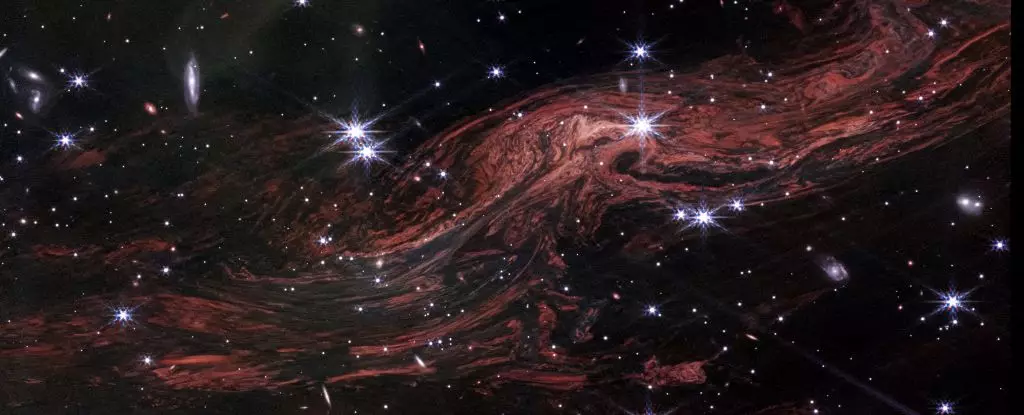The vastness of the universe is akin to a grand tapestry, woven with intricate threads of light, dust, and distant stars. Recently, groundbreaking images from the James Webb Space Telescope (JWST) have illuminated some of these threads with a level of detail that astounds the scientific community. Particularly, the revelations about the interstellar medium around Cassiopeia A—the remnants of a star that erupted into a spectacular supernova some 11,000 light-years away—have opened a new chapter in our understanding of the cosmos. The images capture not only the elegant whorls and striations of cosmic dust, but also the dynamic interactions happening in this celestial milieu, offering a fresh perspective on the intricate makeup of space.
At the heart of this exploration lies the fascinating phenomenon known as light echoes. These occur when a significant burst of light, originating from a cataclysmic event like a supernova, encounters a wall of cosmic dust. The ensuing reflections generate echoes that travel through the fabric of space, arriving at different times. This can be likened to the way sound echoes off barriers in our environment. Such light echoes provide astronomers with spectacular visuals and valuable temporal data, enabling the precise mapping of the surrounding interstellar medium.
Previously, observations from NASA’s now-retired Spitzer Space Telescope hinted at the existence of these light echoes in relation to Cassiopeia A, yet the resolution was insufficient to reveal finer details. Enter JWST, a powerful infrared telescope equipped to capture dim red light that previous instruments overlooked. By focusing on a delicate wisp of dust nearby Cassiopeia A, researchers have now been able to witness the magnificent complexity of the interstellar medium like never before.
The JWST’s recent findings challenge long-held assumptions about the structure of the interstellar medium. Astronomer Josh Peek of the Space Telescope Science Institute aptly noted, “We see layers like an onion.” This analogy invites curiosity about the unseen intricacies that exist beyond our naked eye. The data suggest that the medium comprises densely packed sheets and knots of material resembling the swirling patterns found in wood grain. By capturing these details at scales as small as 400 astronomical units, scientists are beginning to unravel the complexities of these cosmic structures, which may be influenced by underlying magnetic field lines.
Instead of simply being a dusty void in space, the interstellar medium appears to harbor rich, layered complexities that could redefine our understanding of cosmic development. The historical perception of this region as merely chaotic is now being reshaped into an image of structured turbulence.
A New Age in Astrophysical Research
This monumental leap in our observational capabilities heralds a new era in astrophysical research, akin to the advancements seen in medical imaging techniques like CT scans. By taking multiple snapshots of the evolving interstellar medium over short time frames, researchers can construct a three-dimensional understanding of its architecture. As astronomer Armin Rest observed, this could completely transform how we study the interstellar medium.
The implications of this research extend well beyond our immediate observations. It prompts scholars to explore not only the evolutionary processes that influence light echoes but also their relationship with magnetic fields that stretch across vast distances in space. Such investigations could provide critical insights into the dynamics of turbulent cosmic environments, reshaping our comprehension of materials that populate the universe.
As the scientific community digs deeper into these findings, excitement grows for the potential discoveries yet to come. Presentations at forums such as the 245th Meeting of the American Astronomical Society showcase ongoing dialogues and analyses stemming from the JWST’s recent contributions. Sensors are likely to yield even more surprising data as scientists continue to harness the power of this pioneering telescope.
This interplay of light, dust, and cosmic events not only enriches our understanding of the universe but also ignites the imaginations of both scientists and enthusiasts of astronomy. Each discovery serves as a reminder of the beauty and complexity that lies beyond our world. As we look outward into the cosmos and study its hidden layers, we inch closer to deciphering the enigmatic stories written in the stars.


Leave a Reply